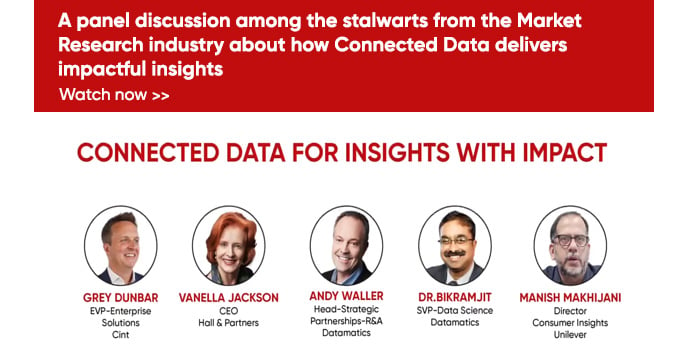Connected Data – A Connected Ecosystem – Better Bounce-back
by Andy Waller, on Oct 15, 2020 9:52:14 PM
Estimated reading time: 3 mins
As we learn to live with the COVID virus and the manufacturing, retail, leisure and services sectors limp back to normality, whatever that means today, consumers’ emotions and behaviour have changed dramatically. The spectre of unemployment looms large for many and so discretionary spend is curbed and priorities are changed for the foreseeable future, perhaps for ever. As a result, years of consumer behaviour data becomes obsolete and the need for a new paradigm emerges; a way to connect data from existing silos into a single, connected data ecosystem becomes critical. Businesses which can harness the power of connected data are able to deliver new insights at speed, giving them a crucial advantage in the quest for a fast, strong bounce-back.

What is Connected Data?
Today’s hyper-connected consumer is generating data constantly; 1.7MB of data are generated by every single person on the planet every second, equating to 2.5 quintillion bytes generated every day. Companies have invested huge amounts into collecting and storing this “Big Data” building huge data lakes to enable them to interrogate each different source of data to answer business questions. However most organisations are not realising the value of the data they are collecting; as they analyse each discrete data source they miss out on valuable context and fail to build an holistic understanding of their customers. Like the parable of the blind men and the elephant each discrete data set gives an incomplete and often contradictory picture of the customer.
The ability to use big data to understand consumers is dependent on the relationships between the data sources and is only realised when it is connected. As per Metcalfe’s law which states that the effect of a network is proportional to the square of the number of connected users, so the value of big data increases exponentially with the number of connections or nodes. It is only by connecting all of the discrete data sources that a complete picture of each customer and potential customer can be built and consequently organisations can develop an holistic understanding of their consumers and consumer analytics data and “see the whole elephant”. This in turn means that marketing can think less in terms of segmentation and more in terms of hyper-personalisation, developing strategies which treat each of their customers as human beings and build meaningful relationships with them.
Connected Data & Connected Ecosystems
A connected data ecosystem is dependent on using the right storage ‘container’ for the data; one which enables the data to be connected, for this the relationship between data needs to be considered as a primary element in the storage strategy. As important as the collection and connection of data are, in the connected ecosystem we also pay attention to the distillation of data and how the data can be used to inspire key stakeholders in order to drive business impact. In this ecosystem approach we work with agencies and platforms in partnership to deliver speed, scale, repeatability and innovation.
Business impact of Connected Data
Data curated, refined, and connected through multiple touch points has immense value. A connected data ecosystem can help with building a complete network topology, increase the visibility of data across the organisation, improve efficiency and collaboration, deliver real time results and of course create a unified customer view to enable hyper-personalisation.
In summary
A data lake without an ability to connect discrete data sources becomes a big data swamp, in order to deliver exponential value from existing and new data sources the relationships between data need to understood and mined. Companies with a connected data ecosystem including platforms, agencies and partners have a critical advantage in being able to build an holistic view of their customers and consequently bounce back faster and more sustainably than their competitors.
Next reading
- “Frankenstein” or “Alice”? – Identify early-on with Data Sciences and Augmented Analytics!
- How technology is disrupting Market Research operations
- Big Data? - Get Big Insights!
- A beginner’s guide to the Role of Augmented Analytics in Consumer Behavior Analysis
- Use Artificial Intelligence and Analytics to unlock value from unstructured data


















